Foresights and ideas that expand minds and inspire a change of heart.
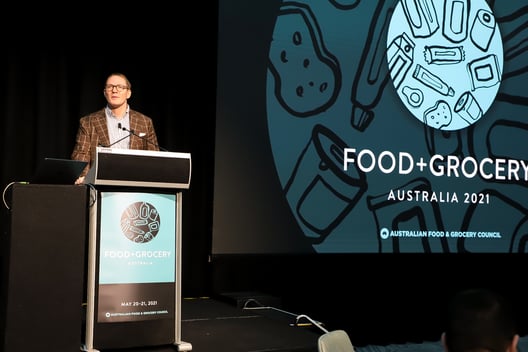
In 1914, among high unemployment, Henry Ford decided to pay his factory workers a minimum of $5 a day. It was close to double what the average auto factory worker made and it shocked the industry. But it was a brilliant move. The oft-cited reason for this raise is that Ford wanted to ensure that every employee could buy the cars they made. In fact, Ford had a turnover problem and found that if he could retain this workforce at double the cost, he’d reduce the hours lost in re-training and stopping production when no-one was available. The change increased production while fostering loyalty and pride. More than a smart idea, it was a sustainable strategy.
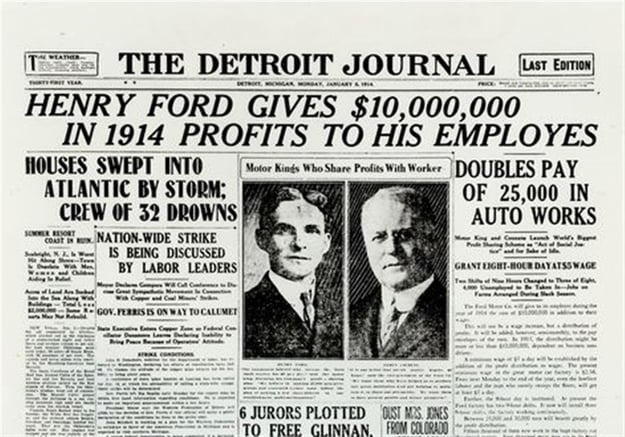
Sustainability is a very broad term. When we hear about a sustainable business today we tend to think of one that takes plastic out of the ocean or plants trees for every product sold. But a truly sustainable business is also concerned with its longevity - and profitability. The definition of sustainability is "meeting the needs of the present without compromising the ability of future generations to meet their needs". A sustainable business is a business that goes far beyond the next decade and builds a long horizon future for itself.
A business that aspires to be sustainable has three concepts it must focus on, the 3Ps:
The thing is: there’s little room for businesses that only aspire toward "politically correct sustainability". I am not talking about going non-for-profit here. I am talking about sustainable innovation. If you intend to be in business for a long time, sustainability is an imperative. It means creating the conditions where your business doesn’t need to rely on finite resources, whether that’s raw materials or your employee’s tolerance for an adverse work environment. The 3Ps are interdependent and can’t be divorced from one another — or at least not for very long. Choosing one over the other two is compromising the durability of your business; it means pursuing eventual failure.
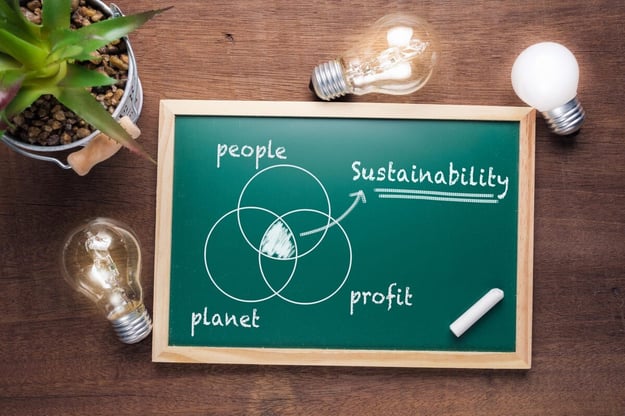
But how does a business start on the path to sustainability? Is trying to protect the people and planet, while still cutting a profit, too ambitious? And if competitors aren’t doing it, why would you make the first move? Henry Ford might have something to say about turning it into an advantage.
You’re probably familiar with the idea of ESG, or environmental, social and governance, three broad themes that guide socially responsible investments. These are ideas that companies and investors consider beyond pure profit. But these are abstract ideas that can mean an infinite number of things when it comes to crafting a sustainable business.
So look to the United Nations. The UN Sustainable Development Goals (SDGs) are a blueprint for peace and prosperity for people and the planet, shared by all the UN member states since 2015. The goals are deliberately specific, which is why there are seventeen of them.
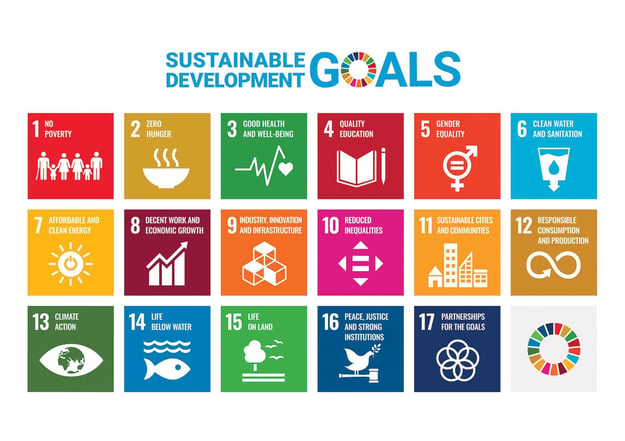
The ideas of ESG and the SDGs prompt people, organisations and institutions to rally around a shared future, creating an array of stakeholders the world over. For businesses — which can be potent sources of economic, social or political power — these goals are a way of reimagining a sustainability strategy. It’s a map for moving from the abstract to the concrete.
These aren’t checkboxes that can stand in for your own goals. They’re a way of guiding the actions - and KPIs - that give businesses longevity.
For instance, when Nike was called out throughout the 90s over its labour standards and practices, its image and sales took a huge blow. In trying to reform its image, the goal was not to improve “social” conditions but to create decent work (Goal #8) that allowed people to afford basic needs (Goal #2) and create social mobility (Goal #1), address the gender inequalities endemic to sweatshop labour (Goal #5), ensure the health and well-being of its sub-contractors (Goal #3) and ultimately solidify a responsible production model (Goal #12). And that’s without getting into the environmental impacts of manufacturing.
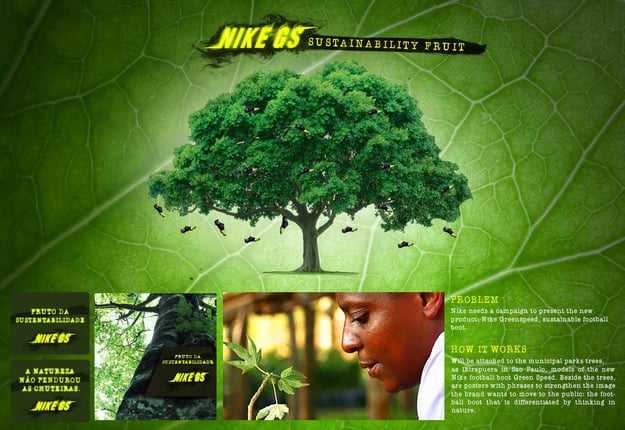
The SDGs provide a framework to rethink the impact of a product or service and the issues that plague an industry. They also offer avenues to really differentiate a brand in the hearts and minds of customers — according to PwC 90% of citizens say it’s important for businesses to sign up to the SDGs.
IKEA is an example of a business that has cast a wide net in its sustainability goals. From eliminating single-use plastics in its cafeterias, to incorporating recycled plastic into its products, to using more durable materials, to testing buy-back and recycling programs for its products, the furniture giant has gone broad but also very specific in striving for a sustainable business. Instead of depleting limited resources, they’re problem-solving for a business problem that won’t really be a problem until decades down the track. That’s thinking ahead. IKEA’s scale also makes an incredible difference to their potential impact; they’re solely responsible for 1% of global commercial-product wood consumption. But this creates an advantage out of their size, which would be a liability if they were pursuing an unsustainable strategy.
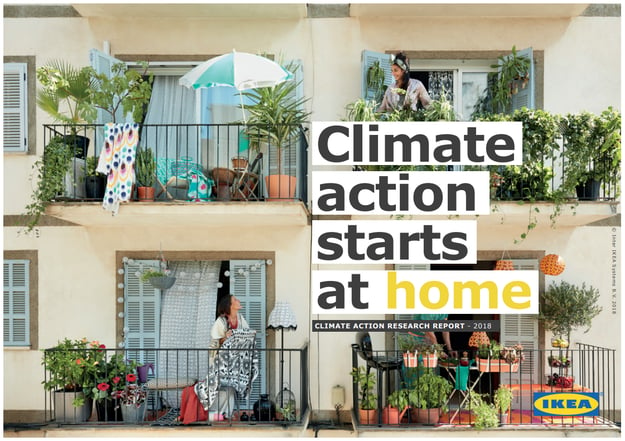
The SDGs are a guide to where the world wants to be. More than an aspiration or arbitrary themes, they have the backing of 193 governments and other stakeholders across the globe. Companies that aren’t using this framework to inform their strategy will risk being left behind by inevitable change, and being punished by conscious consumers. While 41% of businesses say they will implement the SDGs into their business and strategy in the next five years, only 13% have identified the tools they need to actually assess their impact. That leaves a lot of room to make this blueprint your competitive advantage. Overlook the sustainable development goals and you overlook the future, including your own.
Considering the 3Ps of Sustainability and the UN SDGs, which ones can you start weaving into your future business model today?
If you want to learn more about Sustainable Innovation, why not book a keynote / workshop presentation with global futurist Anders Sörman-Nilsson of Thinque.

Header Text
Lorem ipsum dolor sit amet, consectetur adipiscing elit, sed do eiusmod tempor incididunt ut labore et dolore magna aliqua. Ut enim ad minim veniam, quis nostrud exercitation ullamco laboris nisi ut aliquip ex ea commodo consequat. Duis aute irure dolor in reprehenderit in voluptate velit esse cillum dolore eu fugiat nulla pariatur.
Lorem ipsum dolor sit amet, consectetur adipiscing elit, sed do eiusmod tempor incididunt ut labore et dolore magna aliqua. Ut enim ad minim veniam, quis nostrud exercitation ullamco laboris nisi ut aliquip ex ea commodo consequat. Duis aute irure dolor in reprehenderit in voluptate velit esse cillum dolore eu fugiat nulla pariatur.
Lorem ipsum dolor sit amet, consectetur adipiscing elit, sed do eiusmod tempor incididunt ut labore et dolore magna aliqua. Ut enim ad minim veniam, quis nostrud exercitation ullamco laboris nisi ut aliquip ex ea commodo consequat. Duis aute irure dolor in reprehenderit in voluptate velit esse cillum dolore eu fugiat nulla pariatur.

Header Text
Lorem ipsum dolor sit amet, consectetur adipiscing elit, sed do eiusmod tempor incididunt ut labore et dolore magna aliqua. Ut enim ad minim veniam, quis nostrud exercitation ullamco laboris nisi ut aliquip ex ea commodo consequat. Duis aute irure dolor in reprehenderit in voluptate velit esse cillum dolore eu fugiat nulla pariatur.
Lorem ipsum dolor sit amet, consectetur adipiscing elit, sed do eiusmod tempor incididunt ut labore et dolore magna aliqua. Ut enim ad minim veniam, quis nostrud exercitation ullamco laboris nisi ut aliquip ex ea commodo consequat. Duis aute irure dolor in reprehenderit in voluptate velit esse cillum dolore eu fugiat nulla pariatur.
Lorem ipsum dolor sit amet, consectetur adipiscing elit, sed do eiusmod tempor incididunt ut labore et dolore magna aliqua. Ut enim ad minim veniam, quis nostrud exercitation ullamco laboris nisi ut aliquip ex ea commodo consequat. Duis aute irure dolor in reprehenderit in voluptate velit esse cillum dolore eu fugiat nulla pariatur.

Header Text
Lorem ipsum dolor sit amet, consectetur adipiscing elit, sed do eiusmod tempor incididunt ut labore et dolore magna aliqua. Ut enim ad minim veniam, quis nostrud exercitation ullamco laboris nisi ut aliquip ex ea commodo consequat. Duis aute irure dolor in reprehenderit in voluptate velit esse cillum dolore eu fugiat nulla pariatur.
Lorem ipsum dolor sit amet, consectetur adipiscing elit, sed do eiusmod tempor incididunt ut labore et dolore magna aliqua. Ut enim ad minim veniam, quis nostrud exercitation ullamco laboris nisi ut aliquip ex ea commodo consequat. Duis aute irure dolor in reprehenderit in voluptate velit esse cillum dolore eu fugiat nulla pariatur.
Lorem ipsum dolor sit amet, consectetur adipiscing elit, sed do eiusmod tempor incididunt ut labore et dolore magna aliqua. Ut enim ad minim veniam, quis nostrud exercitation ullamco laboris nisi ut aliquip ex ea commodo consequat. Duis aute irure dolor in reprehenderit in voluptate velit esse cillum dolore eu fugiat nulla pariatur.
& STAY UP TO DATE WITH FORESIGHTS AND TREND REPORTS!
WE WILL EQUIP YOU WITH THE VIDEOS AND MATERIALS YOU NEED TO SUCCESSFULLY PITCH ASN.
0 Comment